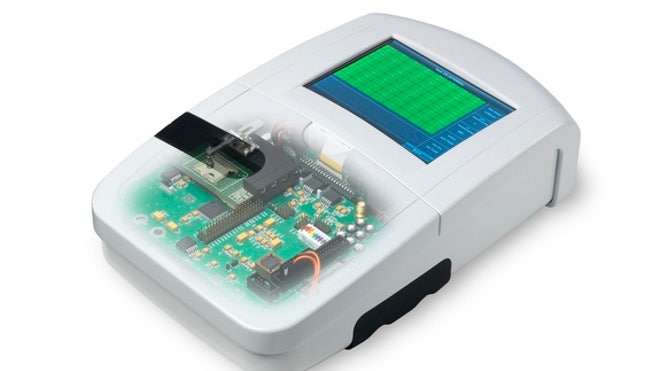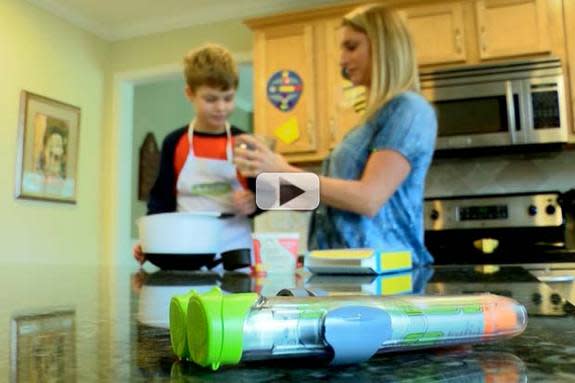
He’s only 3 years old, but Landon Riddle is already the focus of a medical marijuana fight in Colorado.
Landon has acute lymphocytic leukemia, or ALL, a cancer of the blood and bone marrow. It’s the most common cancer in children.
His mother says his condition has improved so much following treatment with medical marijuana that chemotherapy isn’t needed. But the Children’s Hospital of Colorado, she says, disagreed.
It all started back in September 2012. Landon, then 2, was living with his mother, Sierra Riddle, in St. George, Utah, when he developed a sore throat and swollen lymph nodes. The emergency room doctor said it was a virus and sent him home.
School stops giving boy medical pot Is medical marijuana right for a 3-year-old? “Please don’t let my daughter die”
Two days later he went back. His armpits were swollen. “They thought it was either a virus or infection in the lymph nodes, so they gave him some antibiotics,” Sierra Riddle says.
But on the fifth day, his mother says she was changing his diaper and noticed his groin was also swollen, as well as his abdomen and throat. He was having trouble breathing. That time, she got a frightening diagnosis: cancer.
New York governor announces plan for medical marijuana at hospitals Landon was flown to a children’s hospital in Salt Lake City.
“His whole chest was full of leukemia tumors, which is why he couldn’t breathe,” his mother says. “They started him on chemo, but told us that he probably wasn’t going to make it.”
Landon’s cancer had quickly progressed, leading doctors to give him an 8% chance of survival, she says.
In general, ALL is one of the most curable cancers. According to the American Cancer Society, more than 90% of children diagnosed with the disease survive. Chemotherapy is the standard treatment, and Riddle says doctors put Landon on a four-year treatment plan. The first two months of chemo went fairly well, but then Landon became extremely ill.
“Most days he couldn’t get off the couch,” Riddle remembers. “He would just lay there and throw up and throw up.”
Riddle says he also developed neuropathy — a symptom of nerve damage that can cause weakness, numbness and pain — in his legs that left him barely able to walk.
Around that time, a friend set up a Facebook page called Offer Hope for Landon, and recommendations started streaming in, including several endorsing cannabis — medical marijuana — as a treatment.
Medical marijuana, however, isn’t legal in Utah. Still, desperate for answers, Sierra Riddle and her mother, Wendy Riddle, started looking into it. They considered going to California or Oregon. Then their research led them to the Stanley brothers in Colorado. The six brothers are one of that state’s biggest cannabis growers and dispensary owners.
The Stanleys produce about 500 pounds of medical marijuana a year. At the time, much of it was high in THC — tetrahydrocannabinol, the psychoactive ingredient in pot that gets users high but also helps patients with an array of conditions including pain and nausea.
But the Stanleys were also growing something quite revolutionary: a plant cross-bred to reduce the THC and increase another compound found in cannabis called cannabidiol, or CBD. Many researchers believe CBD is one of the compounds in marijuana that has medicinal benefits. According to the National Cancer Institute, it’s thought to have significant analgesic, anti-inflammatory and anti-tumor activity without the psychoactive effect.
The Stanleys expect to produce over 1,000 pounds this year, most of it the cross-bred variety, according to Joel Stanley.
Dr. Sanjay Gupta: Why I changed my mind on weed Riddle, herself a recovering heroin addict, struggled with the idea of giving Landon marijuana.
“I was telling my mom, you know, ‘We really need to think about this.'” But, says Riddle, her son was already prescribed medications like OxyContin and morphine — medications with significant side effects.
Landon suffered from stomach failure, and “the OxyContin made him so miserable, when he had hair, he would literally try to pull his hair out.” In the end, she decided she had nothing else to lose and moved to Colorado. She rented a room, got Landon’s medical marijuana card and began giving him marijuana — THC for the pain and nausea, but also CBD. The dose was based on Landon’s weight. He first took it in oil form, but now takes a pill.
Once the doses started, “Landon’s (red and white blood cell) counts increased dramatically,” she says.
Six months later, encouraged by Landon’s progress, she stopped his chemotherapy treatments completely.
“Once I took the chemo out, I see these amazing results. And no more need for blood transfusion and platelet transfusions,” Riddle says. “I think that the chemo in combination with the cannabis did put him into remission and now the cannabis will keep him there.”
But Landon’s doctor at the Children’s Hospital of Colorado was shocked. “She told me with no uncertainty that if I refused chemo, she would have no choice but to report me to the proper authorities,” Riddle says. So Riddle found a lawyer willing to take her case.
“Nobody wants to hurt Landon here,” says attorney Warren Edson. “This is about making him better. We have no problem making sure he’s monitored throughout this process. And again, if there’s any indication this is doing him harm, I can’t imagine Sierra doing anything other than the right thing.”
Medical marijuana helps stem 6-year-old’s seizures
Children’s Hospital Colorado, in a statement, says it is “committed to protecting the well-being of our patients.” The hospital says it cannot discuss specific cases, but provided information from Dr. Stephen Hunger, director of the hospital’s Center for Cancer and Blood Disorders.
Hunger noted that childhood cancer remains the leading cause of death by disease among American children; that about 25% of childhood cancers are ALL; and that the survival rate for children with ALL treated by Children’s Oncology Group research trials is over 90%, attained with two to three years of chemotherapy.
Children’s Hospital Colorado is “one of the largest centers in the country that treats children with ALL,” the statement says.
“The Center for Cancer and Blood Disorders at Children’s Hospital Colorado has always done its best to work closely with families to provide the most appropriate treatment for cancer, while also seeking to minimize side effects and maximize quality of life.
“Today, chemotherapy is a required part of therapy for children with leukemia. Many supportive care medications are used in children and adults with cancer, including those considered to be complementary and alternative medicine (also referred to as integrative health).
“Marijuana or a product derived from marijuana is often used to decrease side effects in adults with cancer,” the hospital says. “There are several FDA-approved and commercially available anti-nausea medicines derived from marijuana (cannabinoids) that are frequently used by adults and children with cancer, and we often prescribe these medications.”
In an effort to stave off a legal wrangle, Riddle, her mother and Edson met with the doctors in charge of Landon’s care in October.
Source: CNN













